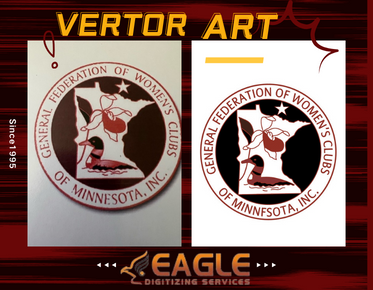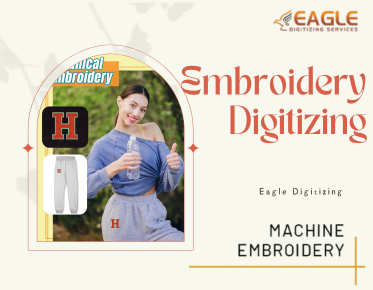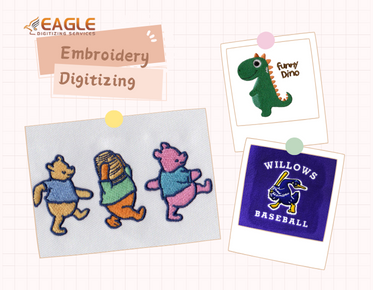The Essential Differences Between Vector and Raster Art
In the ever-evolving world of design, the battle between vector and raster art continues to captivate creatives. Both forms have their unique strengths, but which one reigns supreme? Whether you're a budding designer or a seasoned pro, understanding these two forms is crucial to navigating the digital art landscape. Knowing when to use each type can elevate your work, streamline your process, and save you from headaches in the long run. So, let's dive in and break down what sets them apart.
What
is Raster Art? Breaking Down the Basics
Raster art, also known as bitmap art, is made up of a grid of pixels.
Each pixel holds a specific color value, and together they form an image. The
more pixels in an image, the higher the resolution, which results in a clearer,
more detailed picture. Raster images are perfect for complex visuals that
require high levels of detail, like photographs or paintings. However, they do
come with their limitations—chiefly, resizing. When you stretch or shrink a
raster image, you risk losing detail or distorting the quality, making it less
than ideal for projects that need to scale.
Understanding Pixels: The
Building Blocks of Raster Art
Every raster image is built on a foundation of pixels. These tiny,
square units of color make up the grid that composes the image. The more pixels
an image has, the higher the resolution, meaning it can display finer details
and sharper edges. However, as you zoom in on a raster image, the pixels become
more apparent, causing the image to look pixelated and blurry. This
phenomenon—called pixelation—can limit the usefulness of raster art in certain
applications where clarity is critical at larger sizes.
Common Raster File Formats:
JPEG, PNG, BMP, and More
Raster art comes in various file formats, each with its strengths and
uses. JPEG is one of the most popular for photos, offering a good balance
between quality and file size. However, it compresses image data, which can
cause a loss in quality. PNG, on the other hand, supports transparent
backgrounds, making it ideal for graphics that need to overlay on other
elements. BMP, a simpler format, is often uncompressed and large, while TIFF
files offer higher quality at the cost of large file sizes. Each format serves
different purposes depending on the need for quality, transparency, or file
size.
What
is Vector Art? An Introduction to Scalable Design
Vector art is a completely different beast. Rather than
relying on pixels, it uses paths defined by mathematical equations. These paths
can be straight lines, curves, or complex shapes, all of which can be resized
infinitely without losing any quality. Because the artwork is based on
calculations rather than fixed pixels, it maintains crispness and sharpness at
any size—whether it's on a business card or a billboard. This scalability makes
vector art the go-to choice for logos, icons, and illustrations where
consistency and precision are key.
Paths, Points, and Curves: How
Vector Art is Built
At the core of vector art are paths, which are lines that are drawn
from one point to another. These points, or anchor points, can be adjusted to
create curves or sharp angles. By manipulating the anchor points and curves,
artists can craft intricate shapes and designs with ease. Unlike raster art,
where every pixel is fixed, vector paths can be adjusted and manipulated
endlessly without degrading the image. This flexibility is what gives vector
art its powerful scalability.
Exploring Popular Vector File
Formats: SVG, EPS, AI
Vector art is typically saved in formats like SVG (Scalable Vector
Graphics), EPS (Encapsulated PostScript), and AI (Adobe Illustrator). SVG is
commonly used for web graphics because of its lightweight nature and
scalability. EPS is widely used in printing and graphic design, especially for
logos and illustrations. AI is Adobe Illustrator’s native file format, offering
all the complex design tools a vector artist could need. Each of these formats
preserves the integrity of vector artwork, ensuring it can be scaled without
loss of detail.
Resolution: Why It Matters in
Raster and Vector Art
Resolution plays a huge role in determining the quality of both raster
and vector art. For raster images, resolution dictates how much detail can be
captured and displayed. High-resolution images look crisp, while low-resolution
images appear pixelated and blurry. Vector art, however, isn't affected by
resolution in the same way—because it’s made from mathematical paths, it can be
resized without worrying about pixelation or quality loss.
Raster Art and Resolution: The
Pixel Dilemma
When working with raster art, resolution becomes crucial. For example,
a 72 DPI (dots per inch) image may look fine on a web page, but when printed,
it will appear blurry or pixelated. A higher resolution, like 300 DPI, is
necessary for high-quality prints. However, the downside is that
higher-resolution images also result in larger file sizes, making them harder
to manage and slower to load, especially for web use.
How Vector Art Stays Crisp at Any
Size: No Resolution Worries
Vector art sidesteps the resolution dilemma entirely. Since vector
images are made of scalable paths rather than pixels, they stay sharp and clear
no matter how much they’re resized. Whether you’re zooming in or scaling a design
up for a billboard, vector art maintains its crisp, smooth edges without any
loss of detail.
Scalability: The Power of
Resizing Without Losing Quality
Scalability is the greatest strength of vectorart. Designers can take a logo designed for a business card and resize
it to fit a huge banner without worrying about pixelation or distortion. This
quality is especially valuable for brands that need to maintain consistency
across various media, from tiny mobile screens to large-scale prints.
Why Resizing Raster Art Can Lead
to Loss of Detail
Resizing raster images, particularly enlarging them, often results in
a loss of detail. As you stretch a raster image, the pixels that make up the
image become more noticeable, which leads to a blurred or pixelated effect.
This is why it's crucial to have high-resolution images for projects where
scaling may be necessary, but even then, there's a limit to how much resizing
can be done without compromising quality.
The Freedom of Resizing Vector
Art Without Losing Precision
With vector art, resizing is a non-issue. Since the image is defined
by mathematical equations rather than fixed pixels, resizing can happen
infinitely—up or down—without affecting the quality. This is why vector art is
preferred for logos, icons, and other design elements that need to be resized
across different platforms and media.
File
Size: How Raster and Vector Art Compare
When it comes to file size, vector art generally has the advantage.
Since vector files are based on mathematical paths, they tend to be much
smaller than raster files, which store data for each pixel. This makes vector
files easier to share, faster to load, and more efficient for large-scale
projects. Raster images, especially those with high resolutions, can be massive
and cumbersome to work with.
Why Raster Images Can Get So
Big: The Role of Pixel Density
Raster image file sizes increase with pixel density. Higher-resolution
images require more pixels to store detail, which results in larger file sizes.
For high-quality images, such as photographs or detailed artwork, this is often
necessary. However, it can also make file management more challenging and slow
down performance when working with large numbers of images.
Vector Art’s Lightweight
Advantage: Smaller Files for Complex Designs
Vector files, on the other hand, tend to remain smaller even for
complex designs. Since they are based on mathematical equations rather than a
grid of pixels, they require far less storage space. This makes vector art a
highly efficient choice for detailed designs that need to be used across
various platforms or media.
Flexibility
and Editing: Which One Is Easier to Manipulate?
When it comes to editing, vector art offers more flexibility than
raster art. With raster images, every change requires working with individual
pixels, which can be time-consuming and imprecise. In contrast, vector art
allows for easy manipulation of shapes, paths, and anchor points, providing
greater control over the design.
Raster Art: Pixel-Level Editing
and Fine Details
Raster art excels at pixel-level editing. For intricate details and
textural elements, raster editing is ideal. Fine details such as hair strands,
fabric textures, or complex color gradients are much easier to achieve with
raster tools. This makes raster art perfect for high-detail artwork like
photography and digital painting.
Vector Art: Editing Paths and
Shapes for Endless Possibilities
Vector art allows for more broad editing capabilities. Designers can
quickly adjust paths, colors, and shapes without worrying about pixelation or
detail loss. This flexibility makes vector art perfect for logos, icons, and
other designs that require constant adjustment and scalability.
Printing
Differences: Which Format is Best for Your Project?
The choice between vector and raster art becomes especially important
when it comes to printing. Raster art, while suitable for photographs and
detailed images, often requires high resolution to look good in print. Vector
art, with its ability to scale to any size without losing quality, is the
preferred choice for items like business cards, posters, and large signs.
Raster Art in Print: When
Resolution Makes a Difference
Raster art in print requires careful attention to resolution.
Low-resolution images will appear pixelated and blurry, so it's crucial to work
with images that are at least 300 DPI for print materials. The larger the print
size, the higher the resolution needs to be.
Vector Art in Print: Why It’s
Ideal for Logos and Large-Scale Graphics
Vector art is the gold standard for printing logos and graphics that
need to be scaled to various sizes. Whether you're printing a small business
card or a massive billboard, vector art remains sharp and clear, making it
ideal for large-scale printing projects.
Creative
Use Cases for Raster Art
Raster art’s strength lies in its ability to capture complex details.
It’s perfect for projects that require realistic images, such as photography or
intricate digital illustrations. Whether you’re designing a photo album,
creating realistic textures, or painting digitally, raster art is the way to
go.
Raster Art in Photography and
Detailed Artwork
Photography, by its very nature, is raster-based. Since each pixel
holds color information, raster art can accurately reproduce the details of a
photograph. This makes it ideal for projects that require lifelike
representations, from portraits to landscapes.
How Artists Use Raster Art for
Textures and Realism
Artists often use raster tools to create depth, shading, and textures
that would be difficult or impossible to achieve with vector art. Raster’s
ability to blend colors and create gradients makes it the perfect choice for
achieving realistic effects.
Creative
Use Cases for Vector Art
Vector art is the go-to choice for projects that require sharp, clean
lines and scalability. Logos, illustrations, and icons are prime examples of
creative use cases for vector art. Its ability to scale without losing quality
makes it a favorite for branding, web design, and any project that needs to
maintain visual consistency.
Vector Art for Logos, Icons, and
Illustrations
Vector art is perfect for logos and icons because it can be resized to
any scale without distortion. Whether you’re designing a simple logo or an
intricate illustration, vector graphics are clean, professional, and versatile.
Why Vector Art Dominates in Branding
and Web Design
For branding and web design, vector art is king. The ability to maintain quality at any size ensures that logos, banners, and icons look perfect across all devices and media. Vector art’s clean lines and minimalism also align well with the needs of modern web design.



